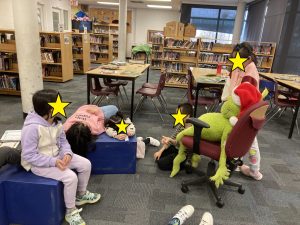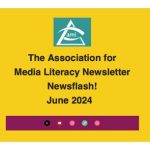How The Grinch Helped Teach Audience Reception Theory
Students of all ages can understand complex media literacy ideas if they are presented in an age-appropriate, accessible way. This post describes a series of lessons, some of which were actually taught to students as young as four, that connected Stuart Hall’s Audience Positioning Theory to a popular figure in the “winter holiday” season, the Grinch.
The Theory: Stuart Hall’s Audience Reception Theory
Stuart Hall was a cultural theorist, born in the Caribbean, who worked in the UK. He is an important thinker in the discipline of media literacy and cultural studies, and his work focuses on power and representation, especially around race, gender, class and ethnicity. He positioned that audiences do not merely passively digest media. Hall theorized that media texts are encoded with messages and values that the media creators possess and wish to impart, but that audiences must then decode those messages and they do so in ways that are not always congruent with the original intent. A dominant reading of a media text is one in which the audience agrees with and aligns themselves with the messages that the creator infused in the text. An oppositional reading of a media text is one in which the audience disagrees with the intended message. Hall called the third potential response a negotiated reading, but I have heard Canadian media experts such as Neil Andersen prefer the term “alternative” or nuanced, since all three readings are types of negotiation with the message. Andersen explains that the notion of an alternative reading is that some interpretations are different because the person doesn’t understand the codes and conventions, so the reception may be arguably wrong by virtue of being incomplete.
The Text: The Grinch
The Grinch is a character first created by children’s author Dr. Seuss in 1957 for his book, “How The Grinch Stole Christmas”. As noted by Wikipedia, there have been many different adaptations in different text forms over the years, from the 1966 animated TV film to a live action film in 2000 starring Jim Carrey, to musicals to podcasts. The original story focused on the Grinch’s efforts to thwart the arrival of Christmas for the inhabitants of WhoVille.
The Lessons: Expectations
I was gifted an almost-life-size stuffed version of the Grinch by a fellow teacher-librarian when she retired. The students like to rough-house with the toy, so I often have to store it out of reach so it won’t get damaged.
These lessons match expectations for the elementary drama curriculum as well as the new language curriculum. The ones listed here are for Grade 1 students.
Drama Expectations
- B1.1 engage in dramatic play and role play, with a focus on exploring a variety of sources from diverse communities, times, and places
- B1.2 demonstrate an understanding of the element of character by adopting thoughts, feelings, and gestures relevant to the role being played
- B2.1 express feelings and ideas about a drama experience or performance in a variety of ways, making personal connections to the characters and themes in the story
Language Expectations
- A2.5 demonstrate an understanding of the interrelationships between the form, message, and context of a text, the audience, and the creator
- B1.4 identify and use oral and non-verbal communication strategies, including expression, gestures, and body language, to interpret or contribute to the meaning of messages
- C1.5 identify some simple elements of style in texts, including voice, word choice, word patterns and sentence structure, and describe how they help communicate meaning
- C1.6 identify the narrator’s point of view in a variety of texts, and suggest an alternative point of view to tell the story
- C21. activate prior knowledge, including knowledge gained from personal and text experiences, that they can use to understand the topics of new texts
- C2.5 identify connections between ideas expressed in simple texts and their knowledges and lived experiences, the ideas in other familiar texts, and the world around them
- C3.1 identify simple literary devices, including rhyme, alliteration, and onomatopoeia, and describe how they help communicate meaning
- C3.2 make simple inferences using stated and implied information and ideas, to understand simple texts
- C3.4 identify some cultural elements represented in various texts, including symbols and values, and explain how these elements contribute to the meaning
- C3.5 identify explicit and implicit perspectives communicated in a text, and describe how these perspectives could influence an audience
The Lessons: Activities
I began by placing the Grinch in a chair in front of the class. Many of them made declarations such as “That’s the Grinch!”
I asked them what they knew about the Grinch. Many answers were statements such as “He steals presents” or “He doesn’t like Christmas”.
I inquired about where (or in what media texts) they’ve seen the Grinch appear. Many mentioned the recent films and movies. I added to their bank of information by mentioning that he first appeared in a book.
We then had an important “side” discussion. Even if you were unfamiliar with the Grinch and had never seen him in anything before, would you think he was a hero or a villain? All the students said that he was a villain. I asked them to describe what it is about him that suggests to them that he is a “bad guy” rather than a “good guy”. Students pointed out his green skin, yellow eyes, pointy sharp fingers and particular smile that they had trouble finding the words for, like “sinister” or “disconcerting”.
Our next step was to act out the words from the book without looking at the pictures. The students played the part of the Whos. One student volunteered to move the Grinch for us and another volunteered to pretend to be Max, his faithful but mistreated dog. I read the rhyming text from the book out loud and the students participated.
We did not get a chance to complete all the activities, but these are the planned, potential next steps:
We will talk about what the author wants us to think about the Grinch. Is he a “good guy” or “bad guy”? Are we supposed to like him? What are we supposed to think about his actions? Why was the Grinch grumpy? Can we ever relate? (Some social media posts have sympathized with the Grinch’s demeanor, if he was able to hear all the singing from the village on the top of his peaceful but lonely mountain.)
We might look closer at some of the words from the book. Which ones rhyme? Which ones hint at telling us how we are directed to feel about the situation?
Depending on the age of the students, we could either then examine some of the memes circulating that sympathize with the Grinch, or look at the phenomenon of visiting the Grinch for holiday photos as an alternative to photo shoots with Santa Claus.
We can ask questions such as: Why would people want to take a photo with the Grinch instead of Santa Claus? What is it about the Grinch that appeals to some people? Use the words “alternative point of view” or “oppositional reading/understanding” to name and notice the idea of disagreeing with the author’s point of view. In the Wikipedia reference cited earlier, it is suggested that the Grinch is based on Dr. Seuss himself, who disliked the commercialization of Christmas and was less than cheery the year he wrote the story, due to his wife’s health problems at the time. In a different Wikipedia article focused solely on the Grinch, it is theorized that he is an “anti-icon of Christmas” for actual people who dislike the holiday. Different media adaptations have given the Grinch a specific reason for hating the holiday. The book suggests that his heart was “two sizes too small”, but whatever the reason, the figure of the Grinch is one that even young children can discuss through a media literacy lens.
(Note: the four photos used in this post were taken by the author and are used with permission. The meme is linked to the original location online.)







